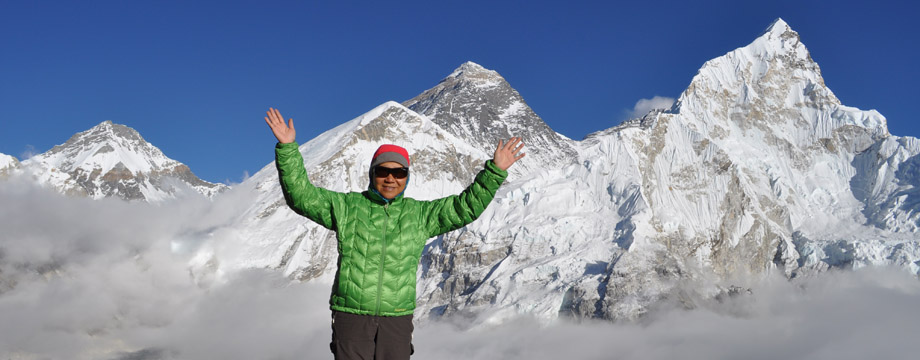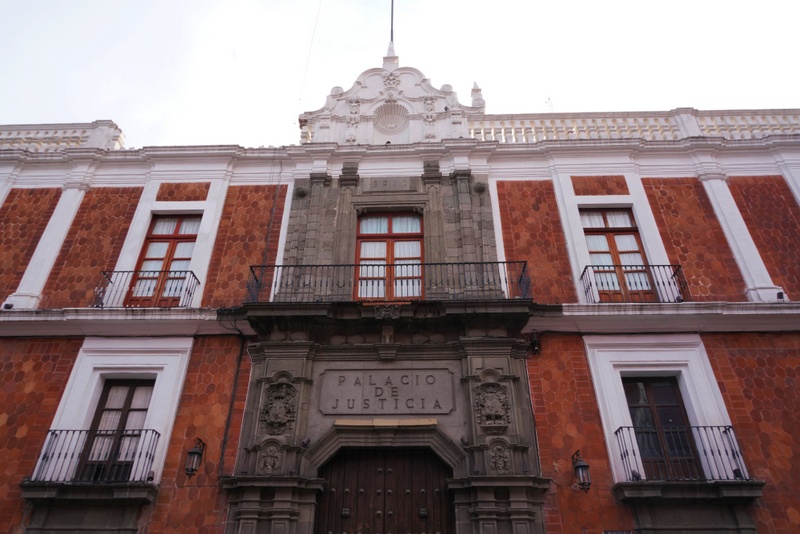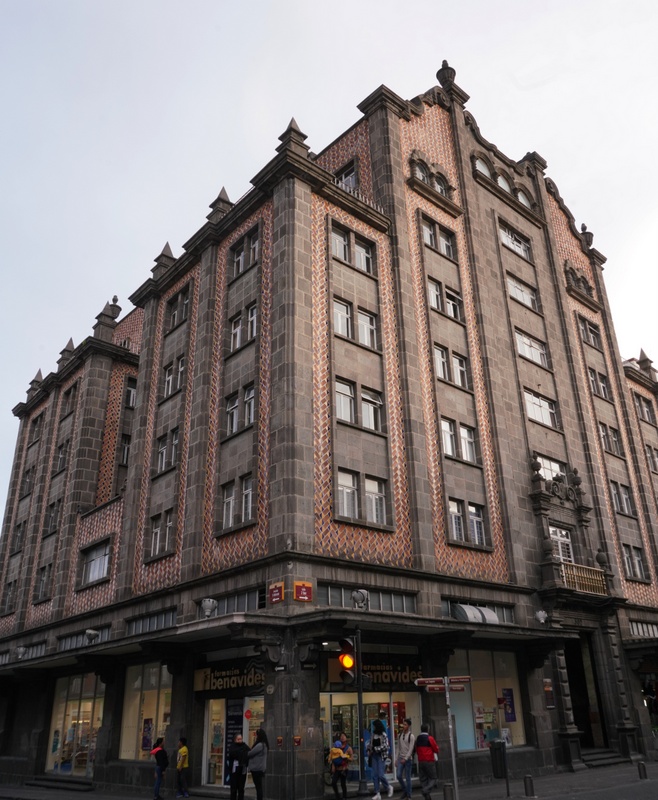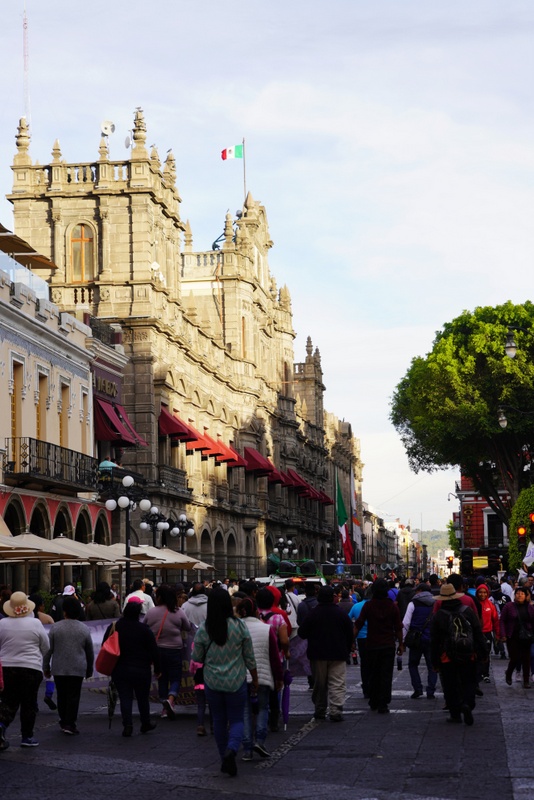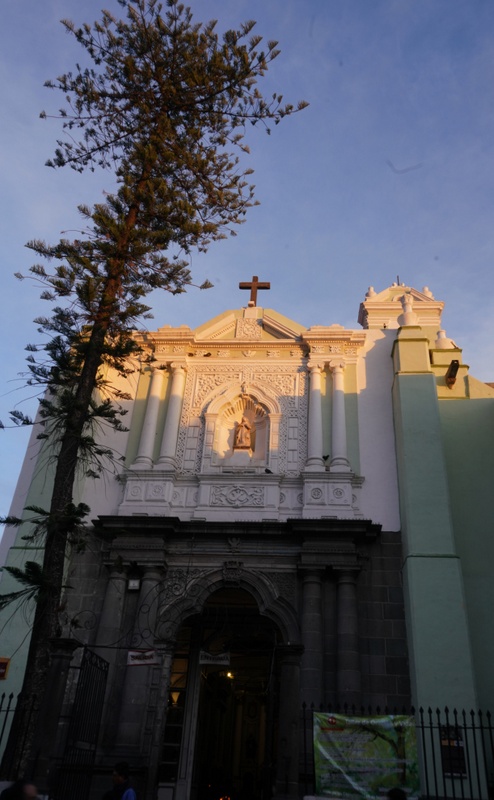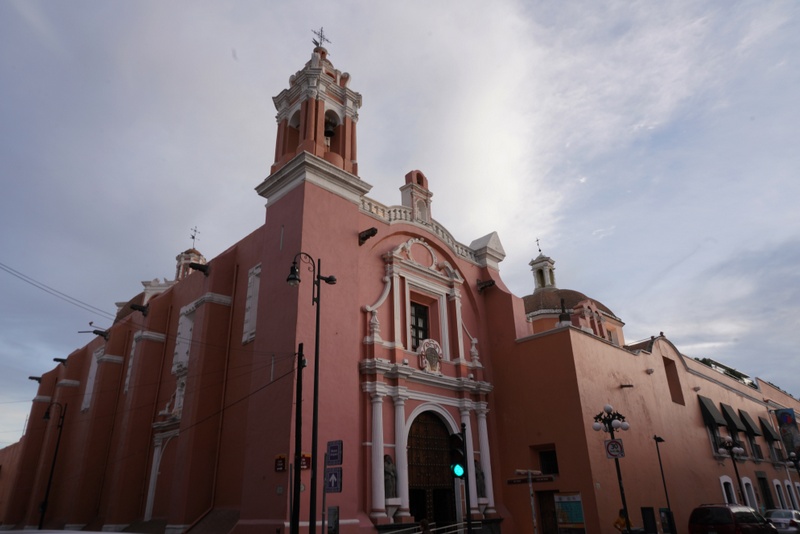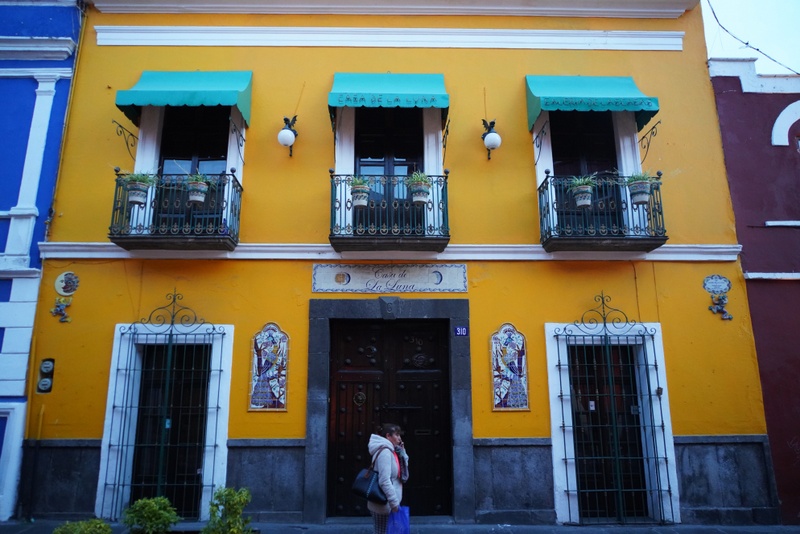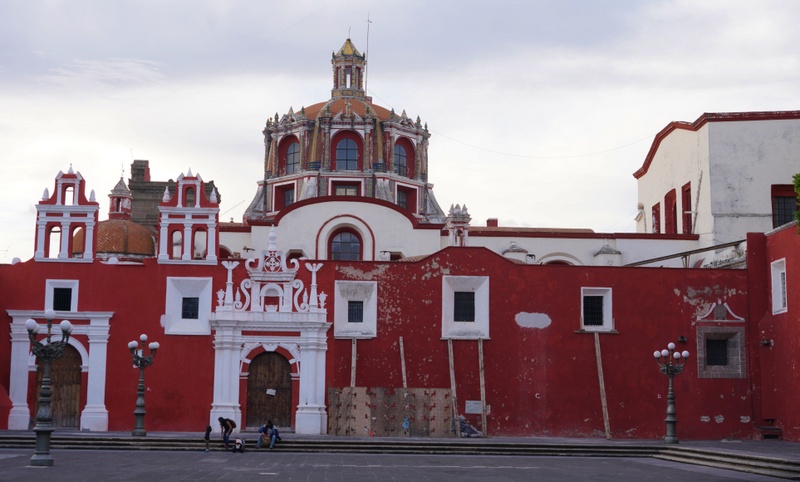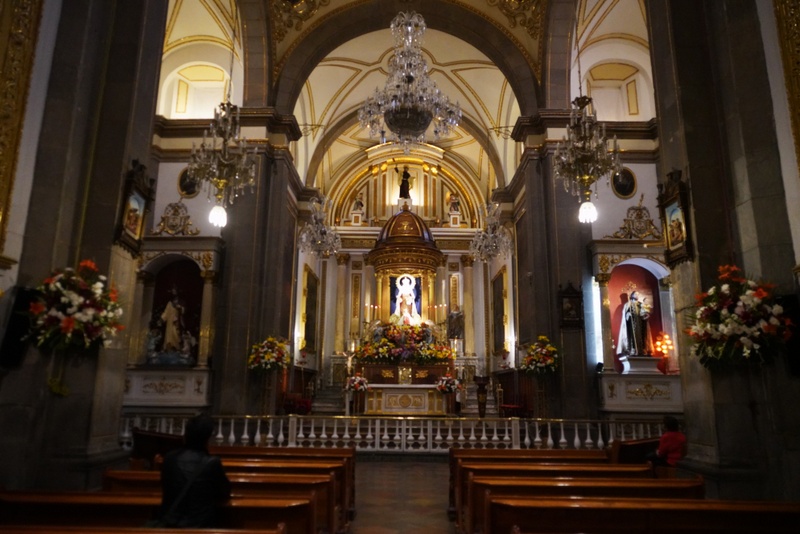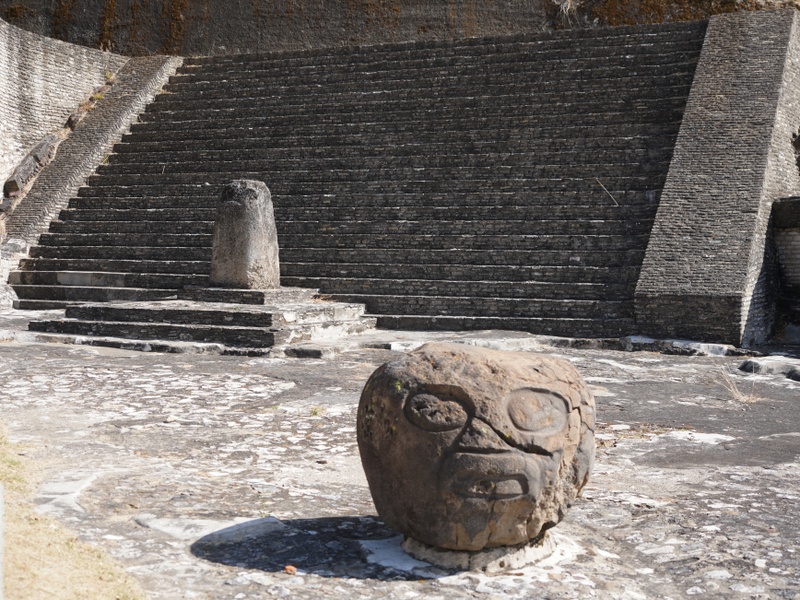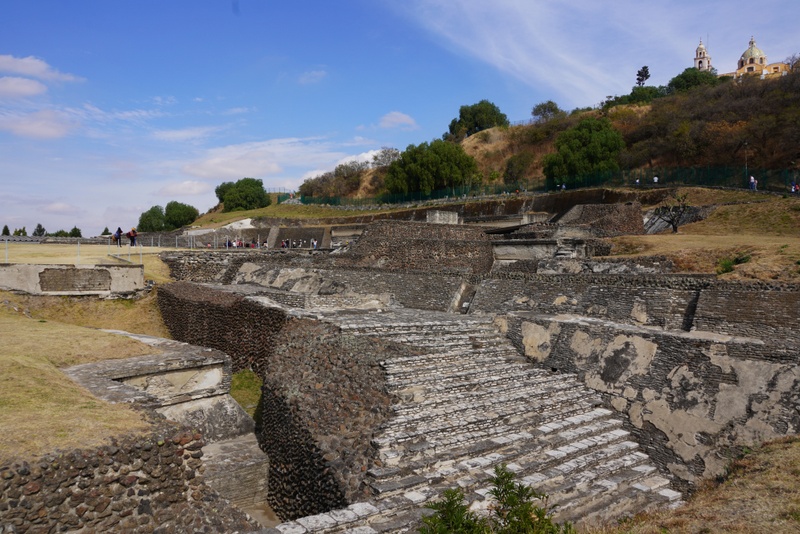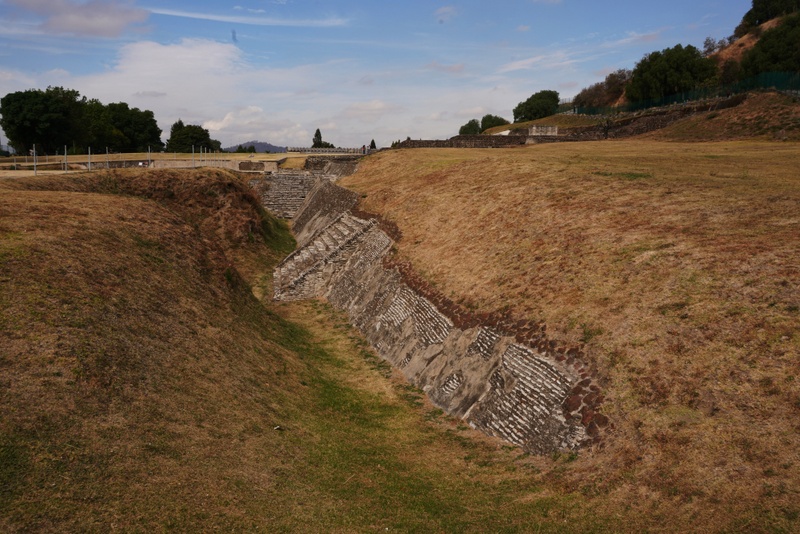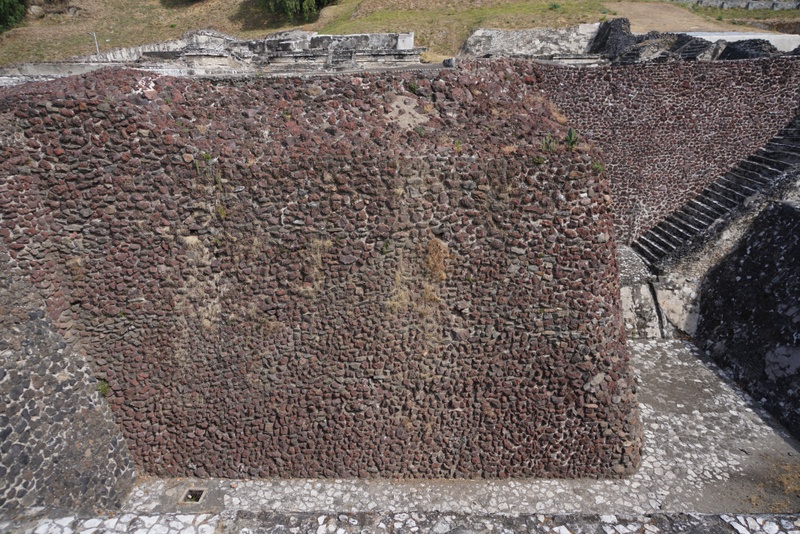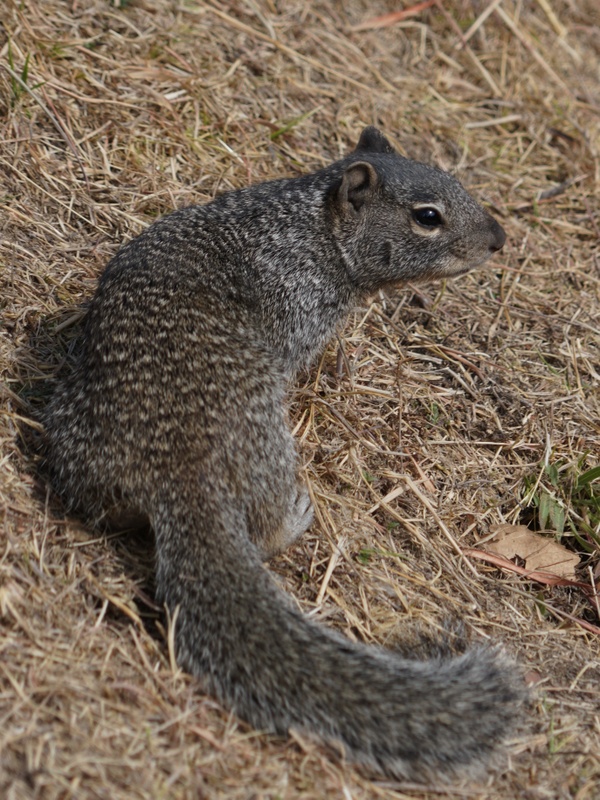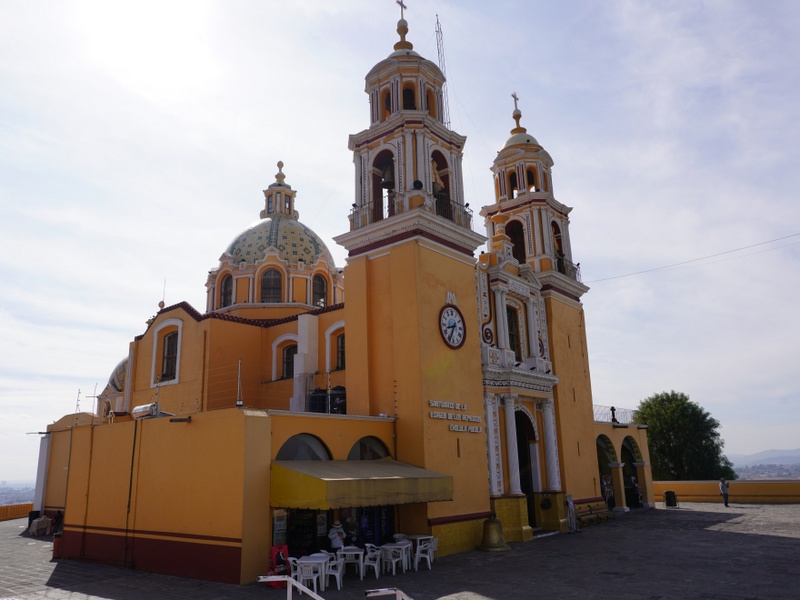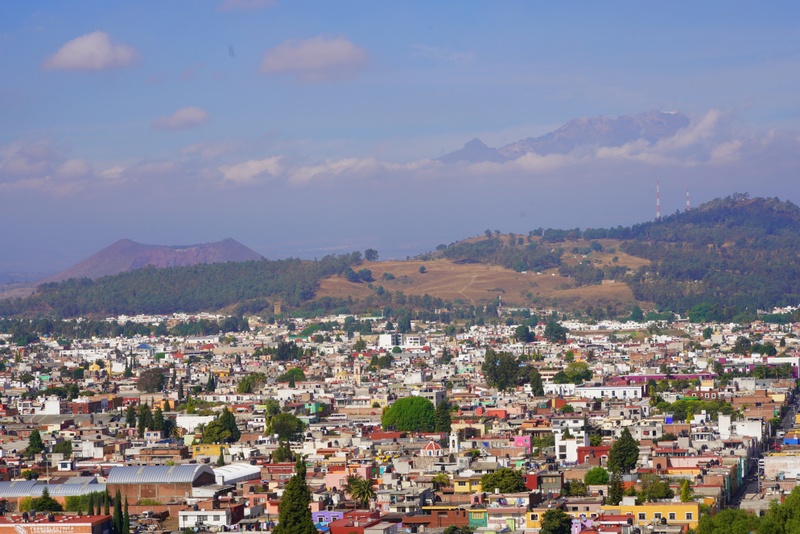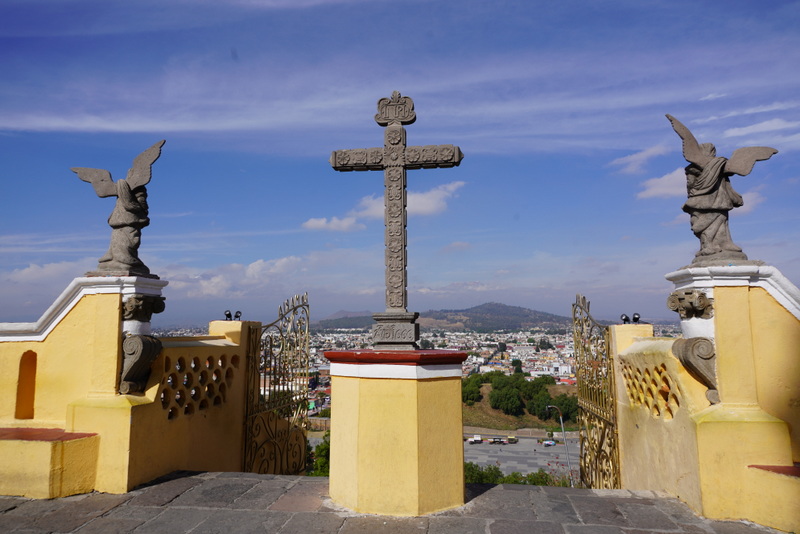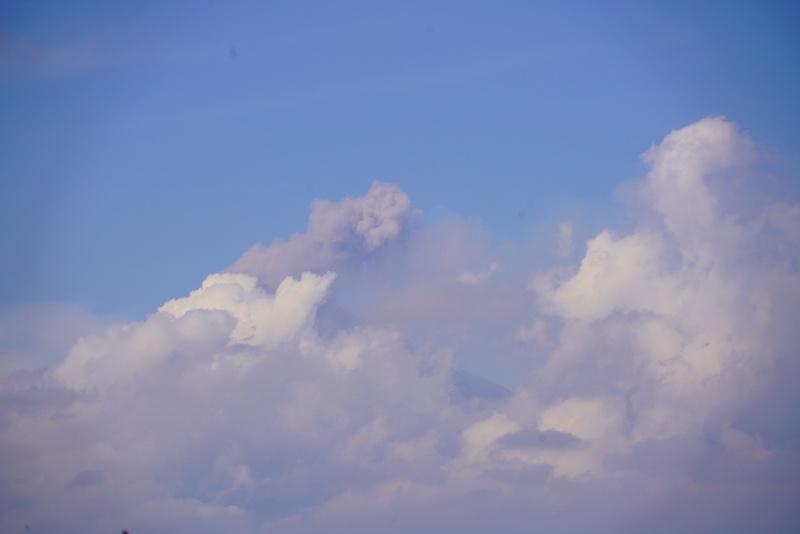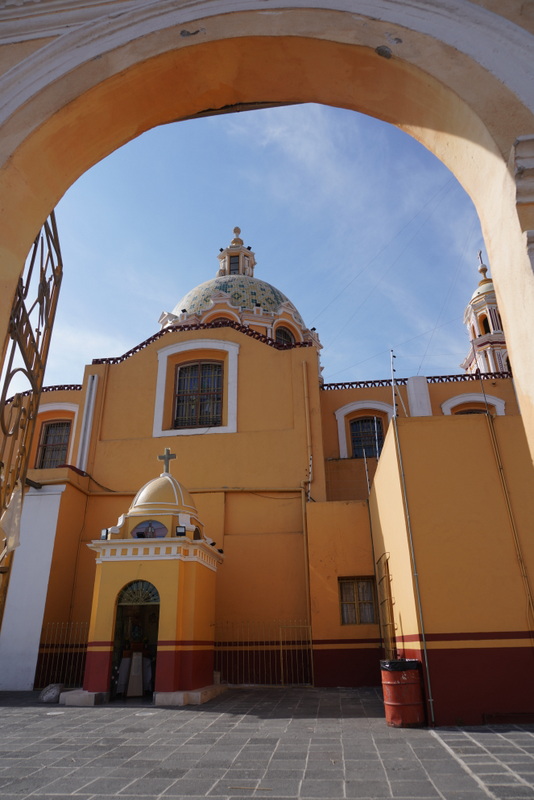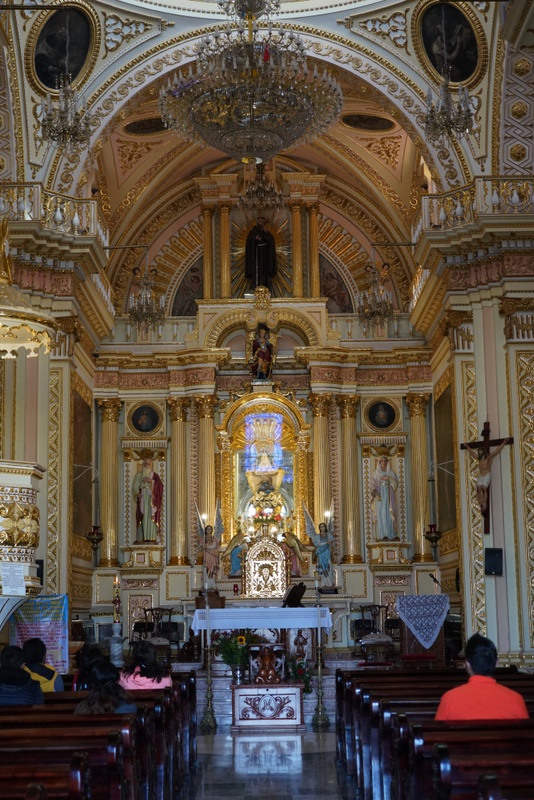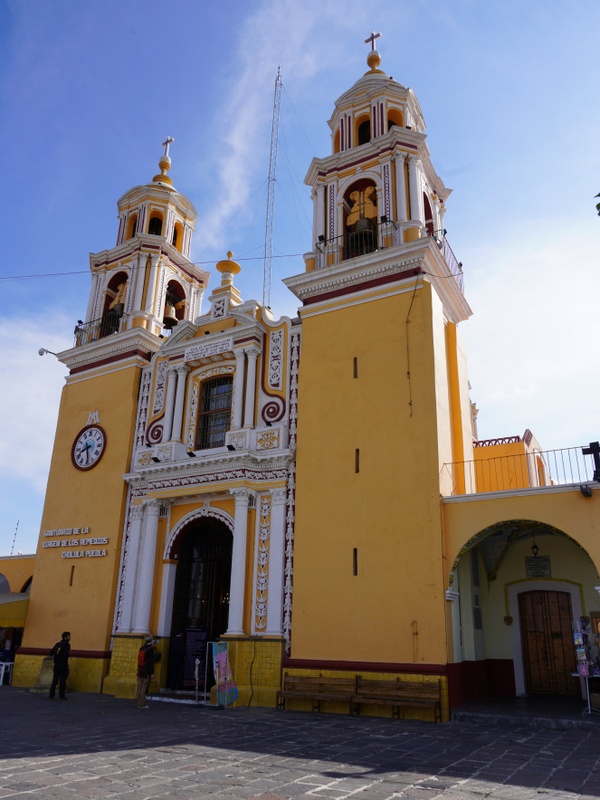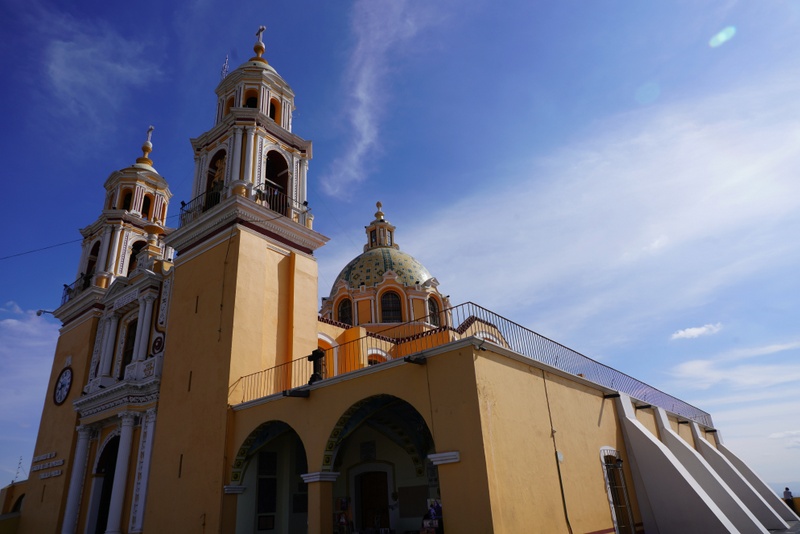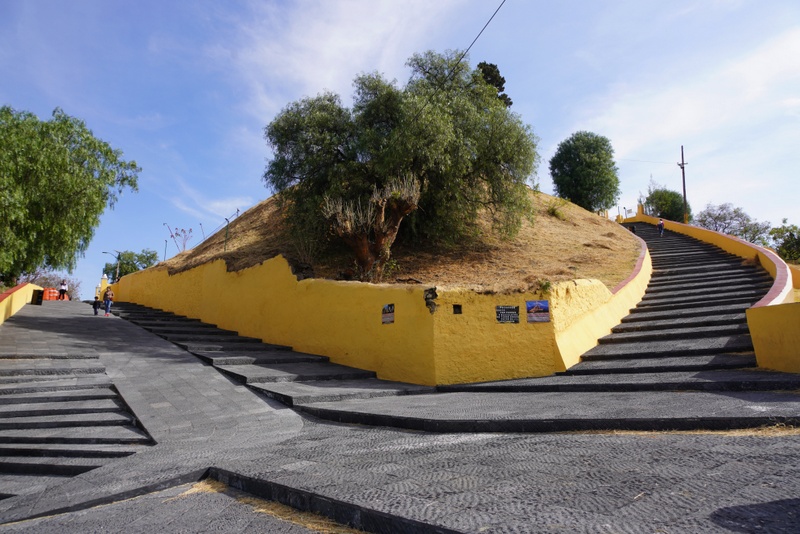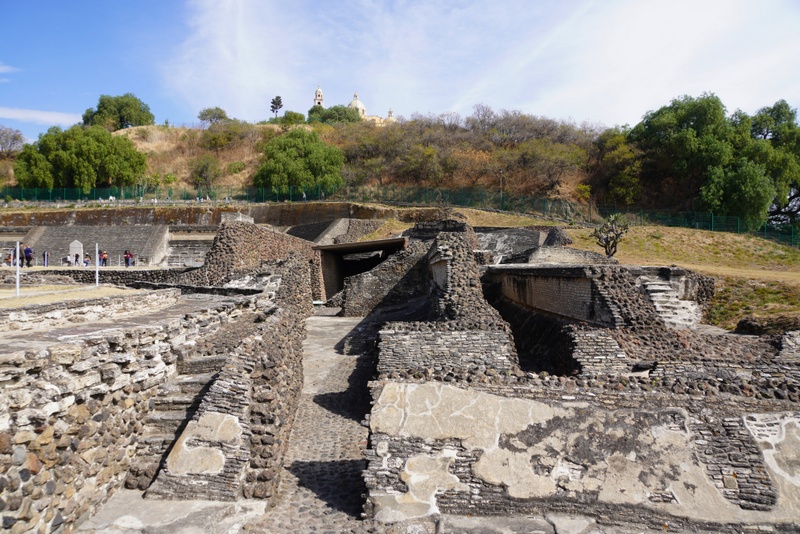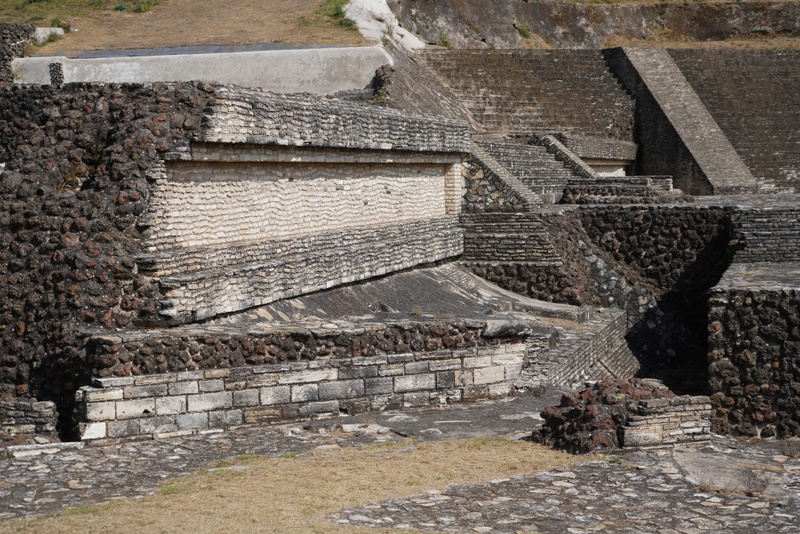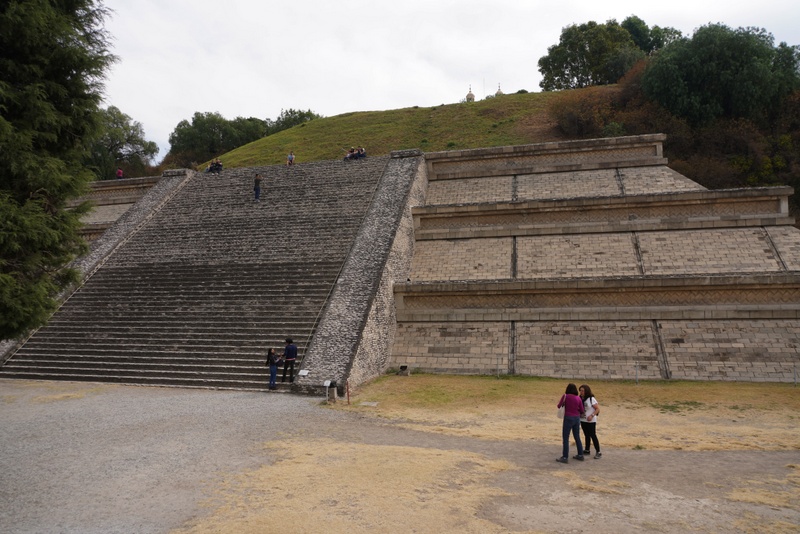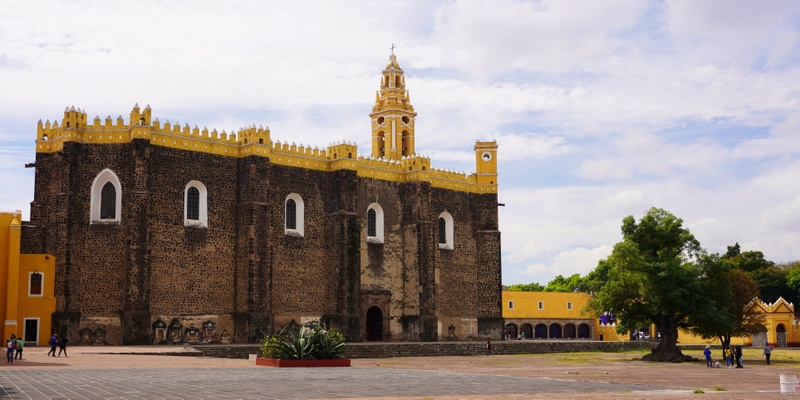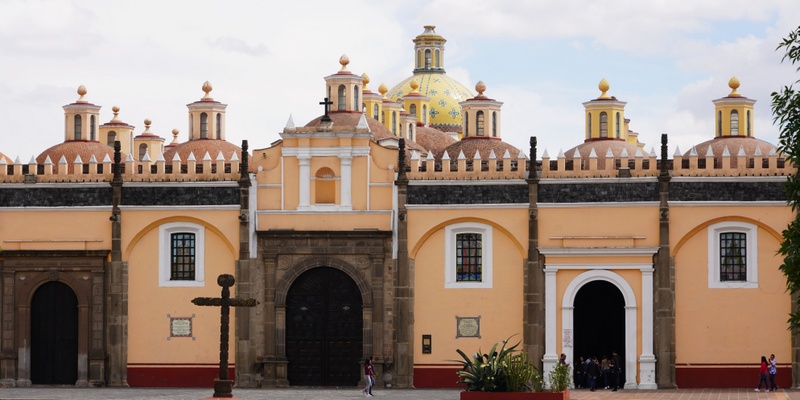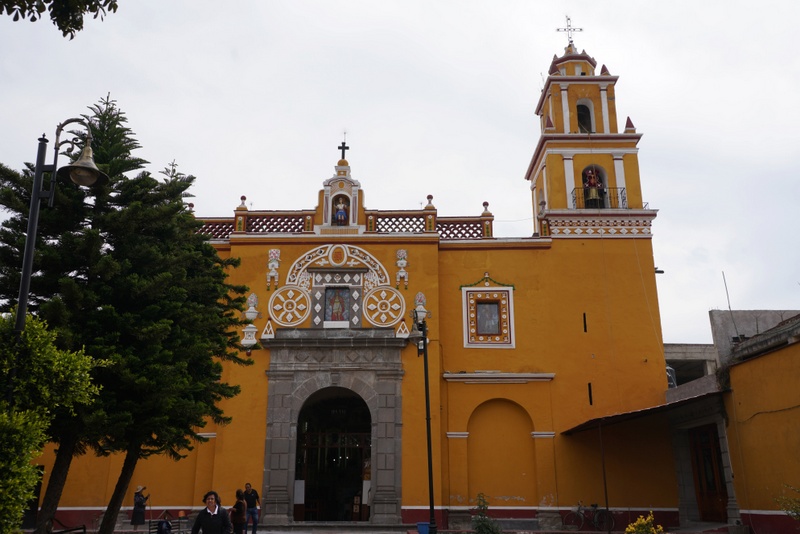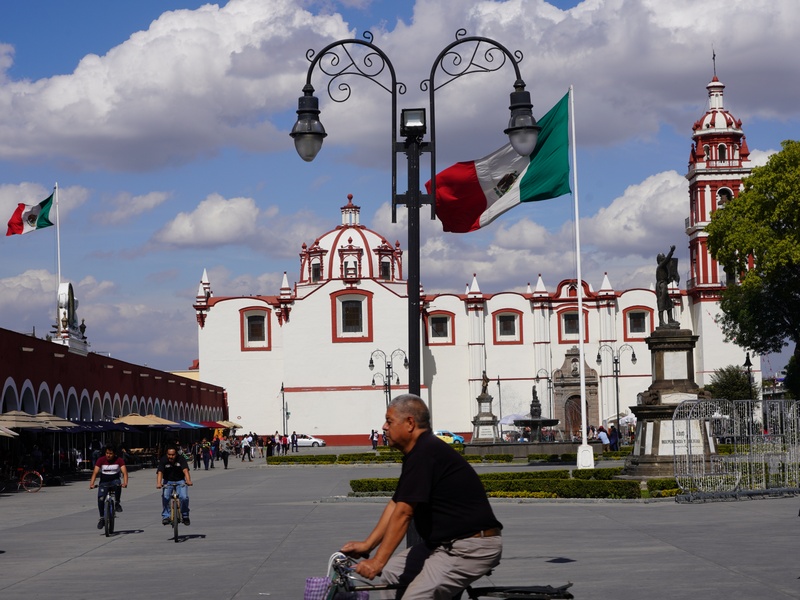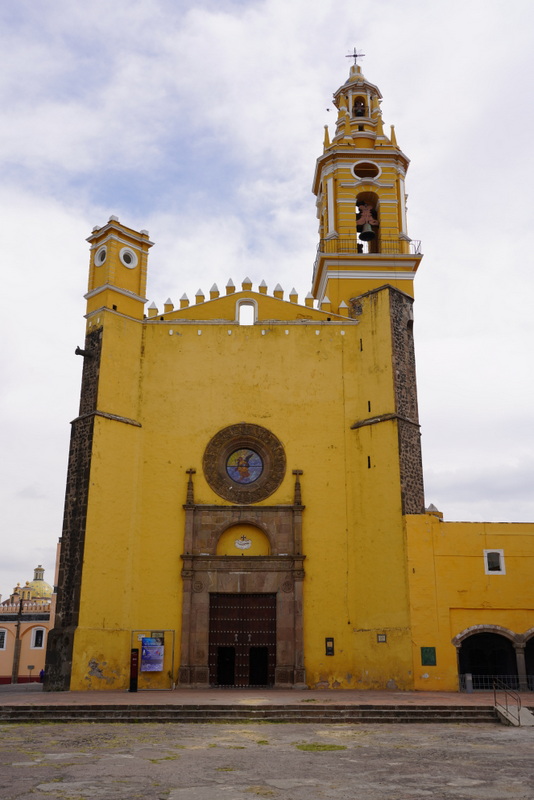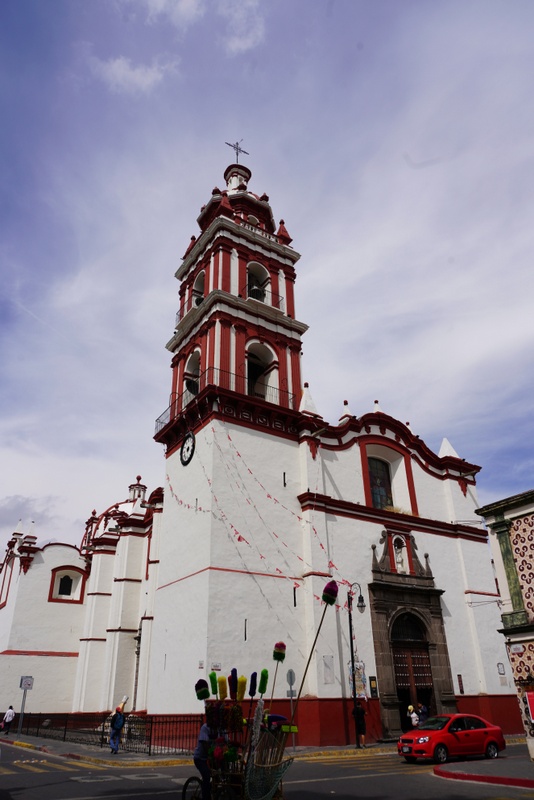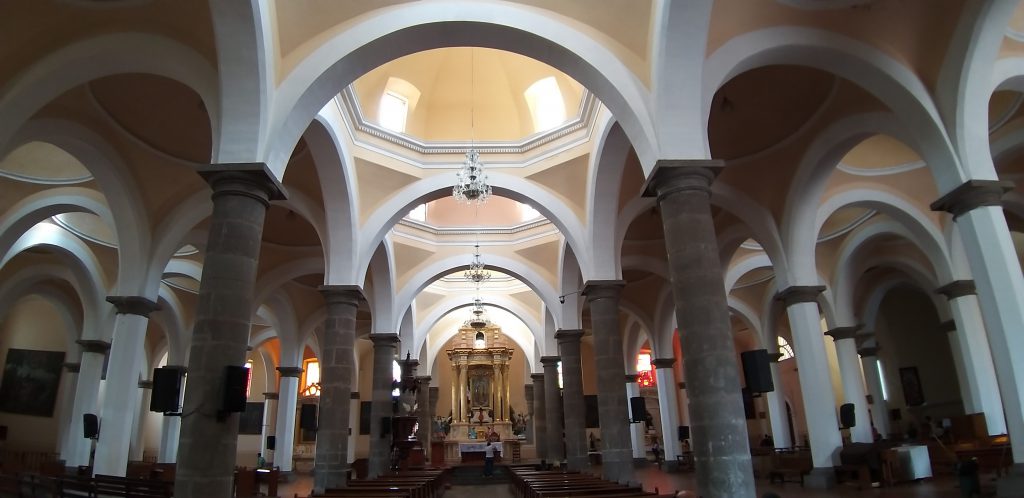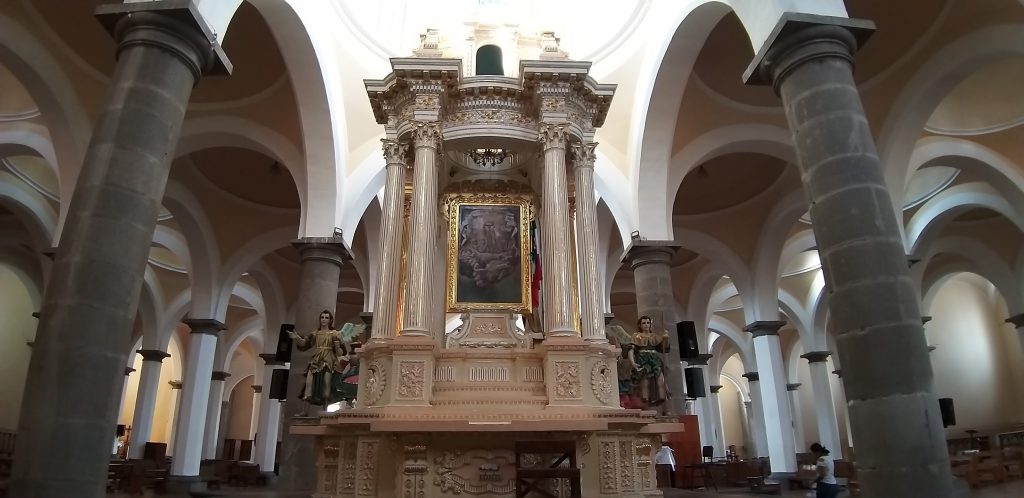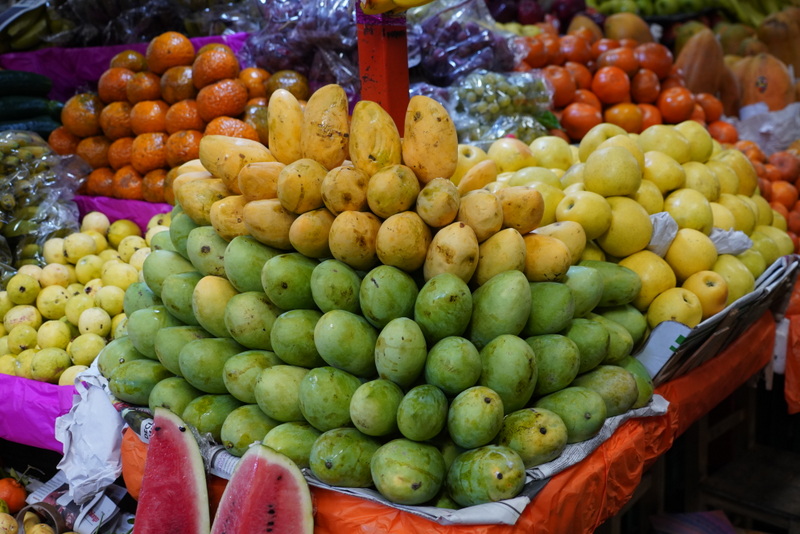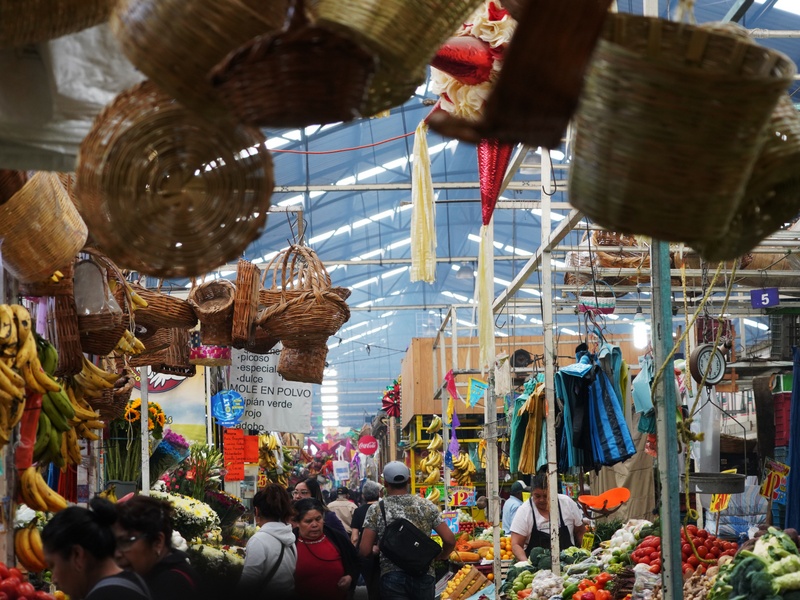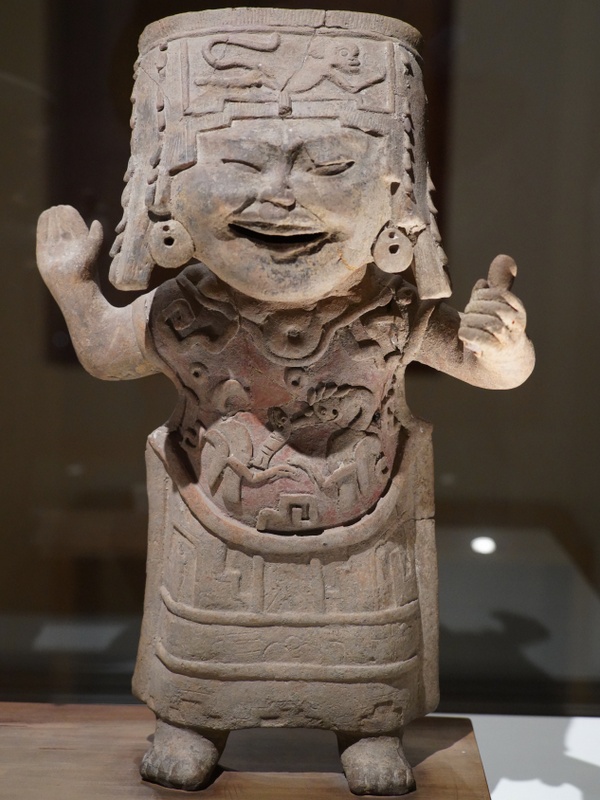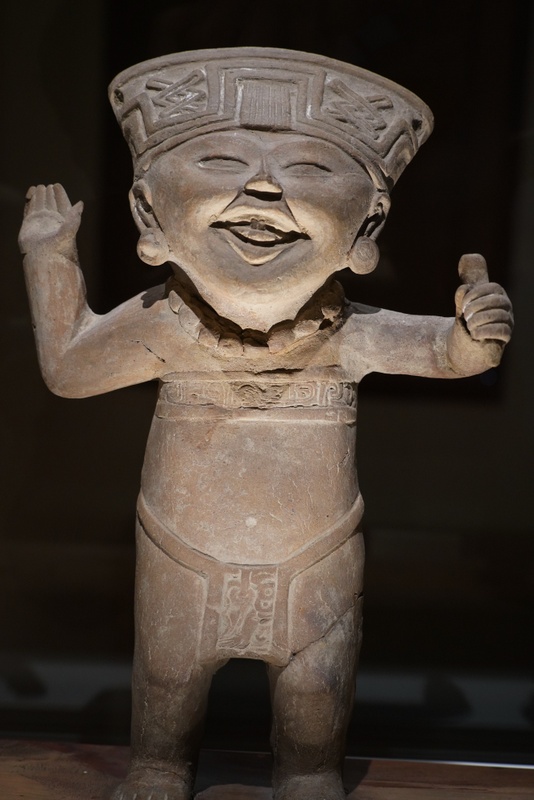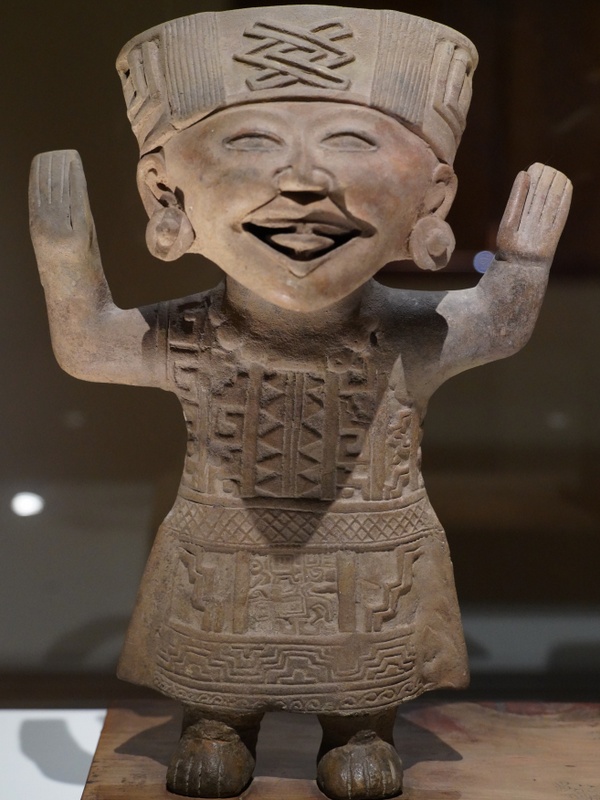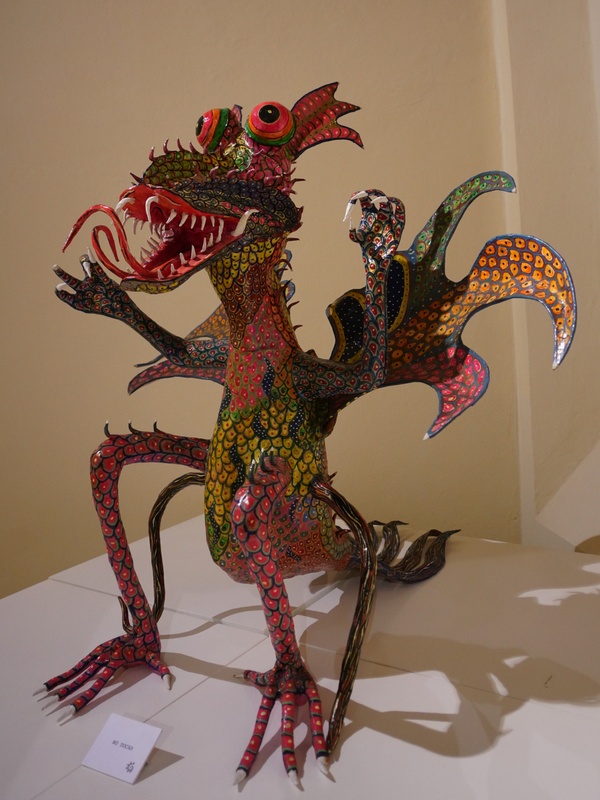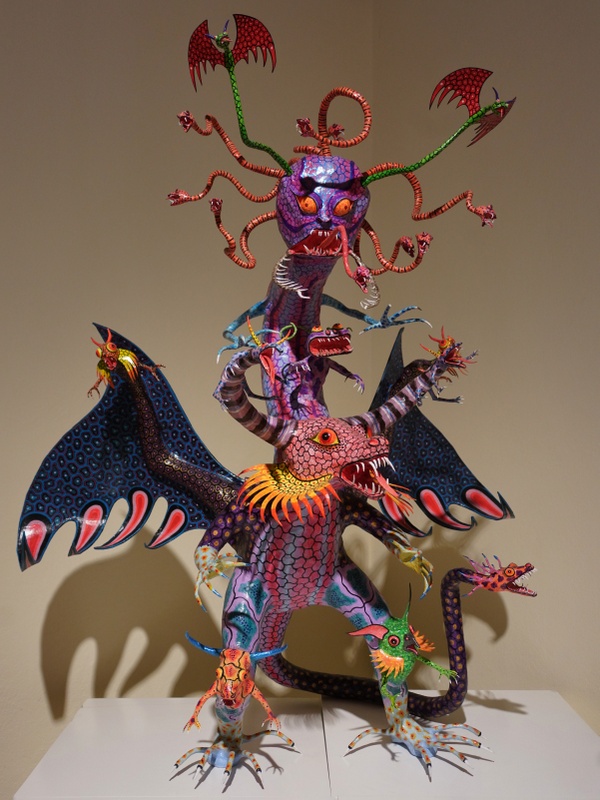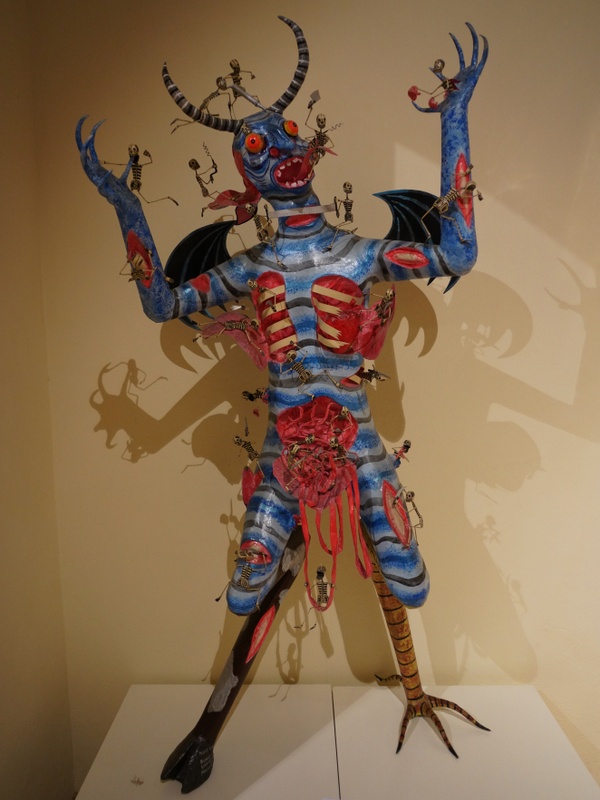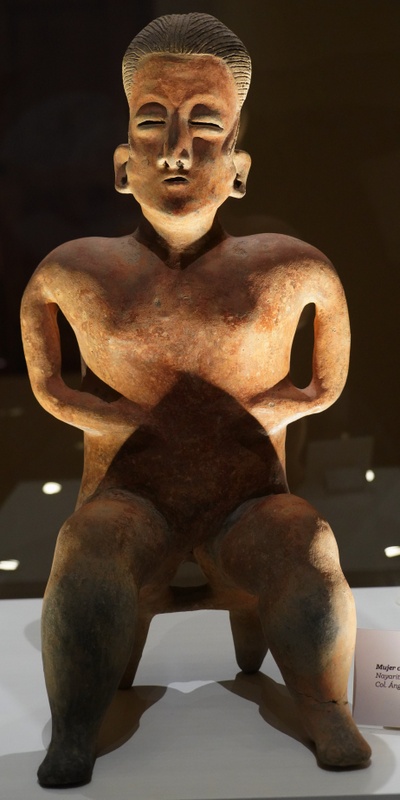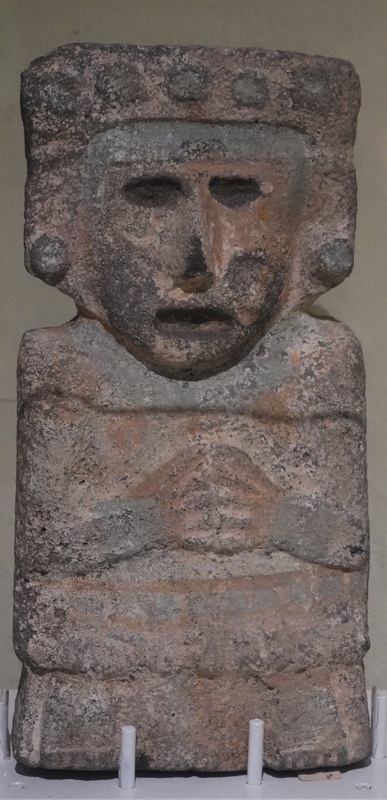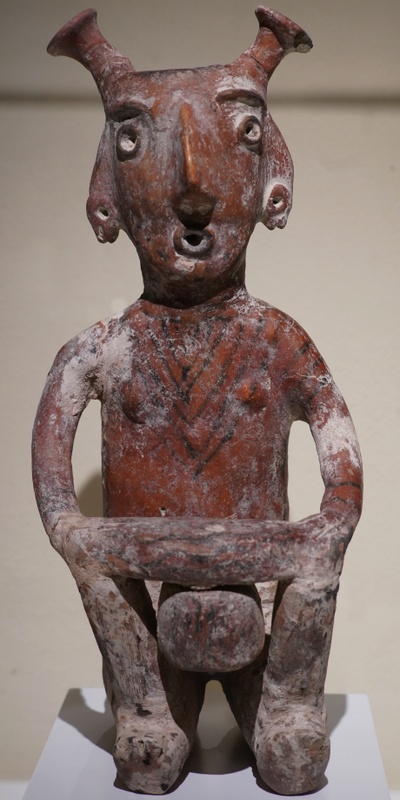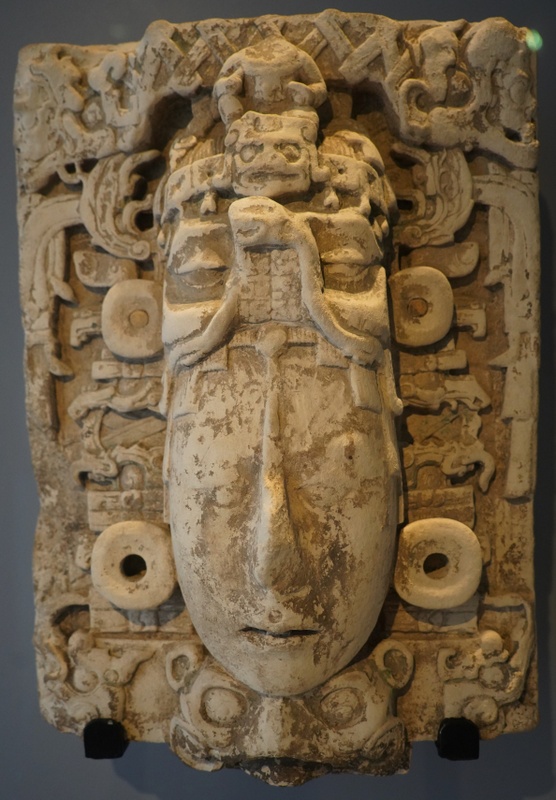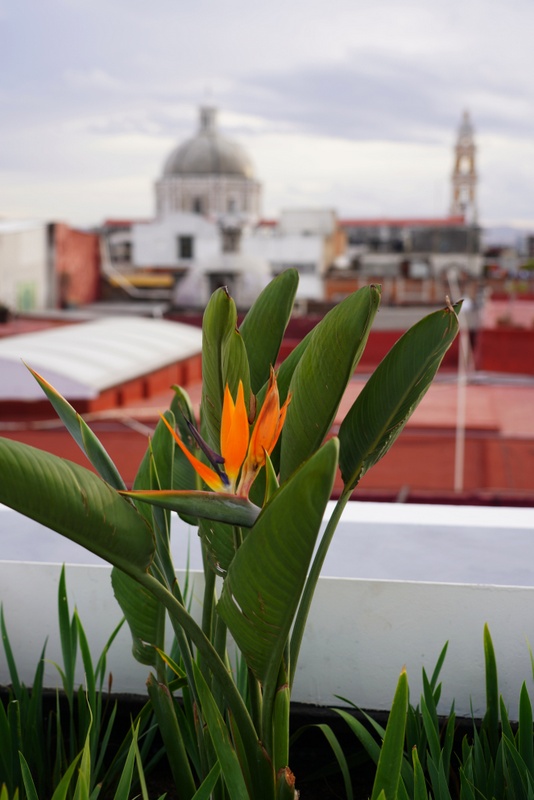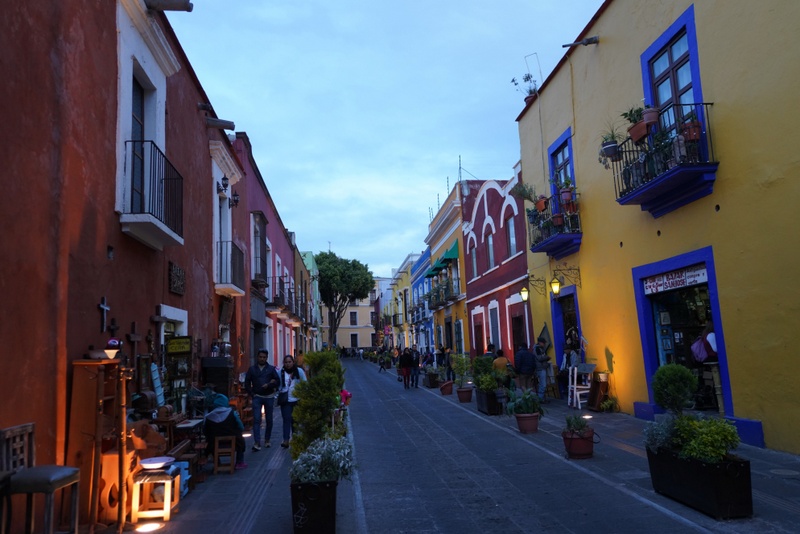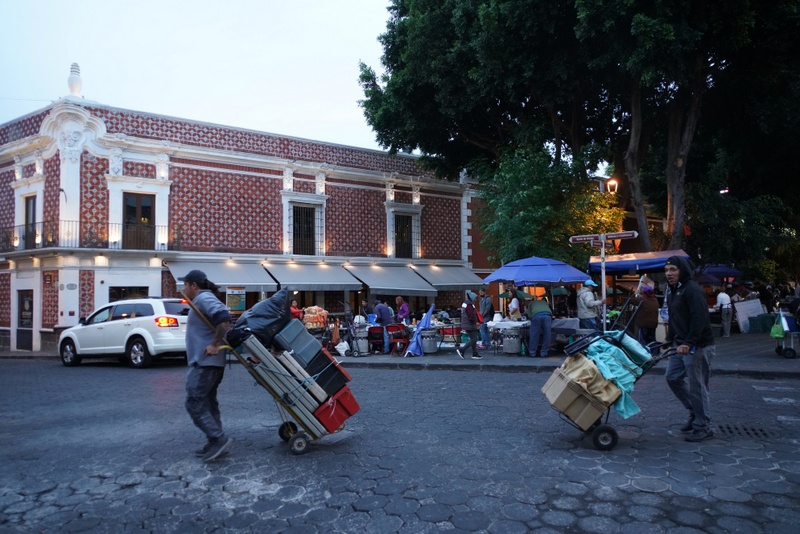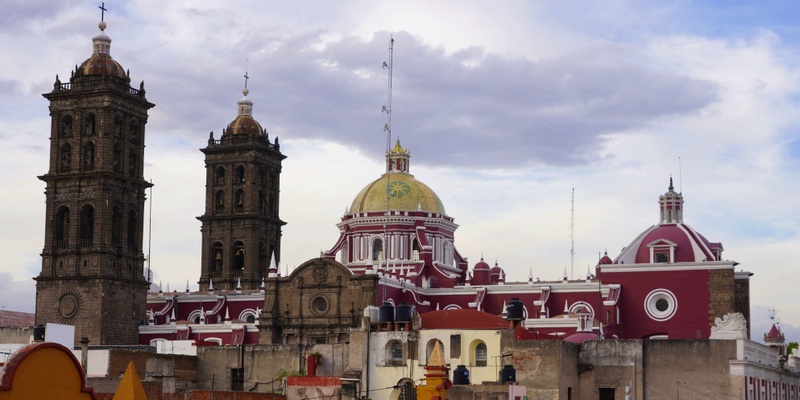
Mexico is one of my favourite countries. I had no plan to visit it this year till Mark and Rachael whom I met last July on the Heritage Foundation expedition to Wrangle Island. Mark a naturalist and photographer, organises whale watching expeditions to Baja California every February. They have convinced me to join a once-in-a-lifetime experience with whales.
Trip Plan
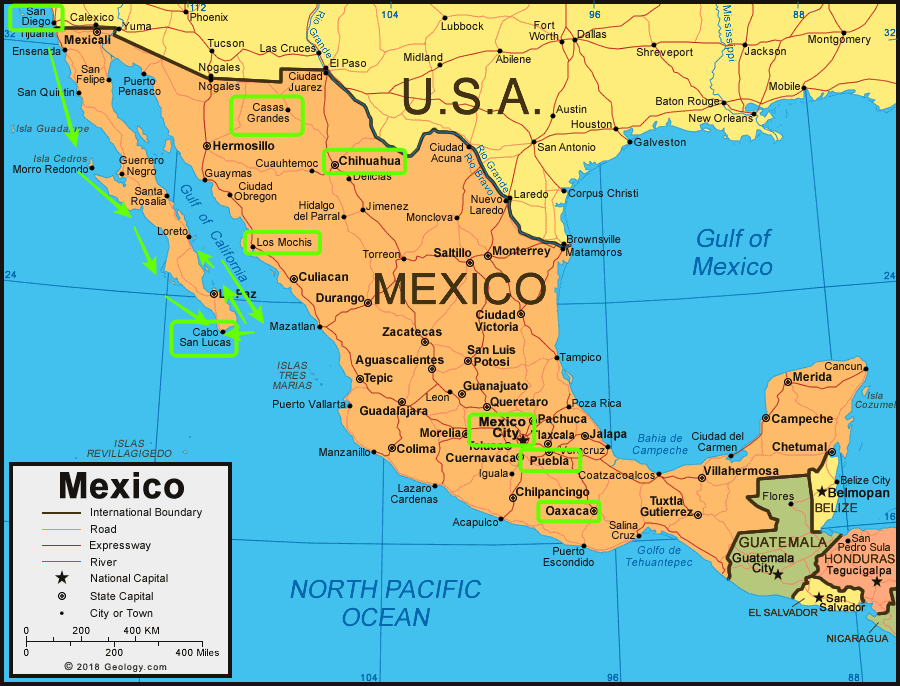
This is my sixth visit to Mexico. I would begin my journey in Puebla and Oaxaca for six days before flying north to Chihuahua on February 5 to meet up with Kylie, my travel-mate from February 6 to 22. I would fly to San Diego to join the whale watching group with Mark and Rachel on February 23. The expedition would end in Los Cabos on March 6. My original plan was to return to San Diego by public bus (some 1000km) and board my flight to Hong Kong return to Hong Kong on March 16. But when I got the news that my godmother was sick, I decided to visit her while I could still travel freely amidst the Covid-19 epidemic that had severely affected free movements of people from China, Hong Kong and Macau.
Mexico
Located in the southern portion of North America, Mexico is bordered to the north by the US, to the south and west by the Pacific Ocean, to the southeast by Guatemala, Belize and the Caribbean Sea; and to the east by the Gulf of Mexico. It is the 13th largest independent state in the world with an area of 2 million square kilometres and an estimated population of some 130 million. It is also the most populous Spanish-speaking country in the world.
Mexico has rich history, culture and natural resources. Pre-Columbian Mexico dates to about 8000BC and is identified as one of the six cradles of civilisation and home to many advanced Mesoamerican civilizations such as the Olmec, Toltec, Teotihuacan, Zapotec, Maya, and Aztec before the arrival of Europeans in the 16th century.
In 1521, the Spanish colonized the area which is today’s Mexico City. After the Mexican War of Independence (1810-1821), Mexico was recognised as a nation state in 1821. The new nation state went through a prolong tumultuous period with social, economic and political instability, civil wars and dictatorship. It lost a huge section of its northern territories of Alta California and Santa Fe of New Mexico to the US after the Mexican-American War (1846-1848). Then came the Mexican Revolution (1910-1920) which culminated in the promulgation of the 1917 constitution.
Mexico has been ruled as a one-party state till the 1990s following a democratic transition. Since 2006, there has been serious conflict between the Mexican government and various drug trafficking syndicates that lead to over 120,000 deaths.
The country is a federation of 32 free and sovereign states. Each state has its own constitution, congress and a judiciary. Citizens elect by direct voting a governor for a six-year term, and representatives to their respective unicameral state congresses for three-year terms.
Mexico City (2,240m above sea leve), is one of the 32 federal states, the capital of Mexico. It is also the most populous city in North America: the population of Greater Mexico City with a land area of about 1,500 km2 is over 20 million.
Mexico, based on 2019 estimates, has the 15th largest nominal GDP ($1.274 trillion/$10,118 per capita) and the 11th largest by purchasing power parity ($2,628 trillion/$20,868 per capita). Due to its rich culture and history, it ranks first in the Americas and the seventh in the world with 35 World Heritage Sites (including 27 cultural sites, six natural sites and two for both their cultural and natural values). Given its rich tourism resources, Mexico is the sixth most-visited country in the world recording some 39 million international arrivals in 2018.
January 30: Hong Kong (GMT+8) – Dallas, USA – Mexico City (GMT-6)
I finalised my 6-week travel plan in Mexico well before the outbreak of the Covid -19 virus in China. My AA flight from HK to Mexico City via Dallas was not affected. I left HK as scheduled around 4 pm and arrived in Dallas after spending 13 hours in a jam-packed plane with most uncomfortable seats. Everyone was wearing a mask in fear of the virus. As usual, I could not sleep and watched a few movies.
American airports are notorious for its immigration service. Though I was in transit, I had to go through the whole immigration process. There were hundreds of arriving passengers! I took almost an hour before I was cleared to enter the US. But the next moment, I was heading to the departure hall and went through the security and immigration procedures once again!
My AA connecting flight to Mexico City took off at 7 pm and I landed before 10 pm. The Mexican immigration service was inefficient. Many passengers had problem in getting an arrival card without which one could not fill in the information and present oneself at the immigration counter. What a mess!
As soon as I came out, I looked for a money changer to get some Mexican peso (MXN). I was surprised to find 20-30 shops offering a wide-range of rates. The average rate was around 17.50 MXN to one US dollar. I had booked a hotel near the airport with free shuttle service. A lady helped me call the hotel and I was told to wait for 10 to 15 minutes.
Nothing happened. I asked another lady to call the hotel again. Finally, a hotel shuttle turned up after 11:45 am. It was after midnight when I checked in. I was exhausted as I had not laid down for over 30 hours. I went to bed around 1 am. What a tiring day!
January 31: Airport to Puebla by Bus
The long-distance bus service in Mexico is good, cheap and efficient. I took the shuttle back to the airport at 7:40 am and bought a ticket for the 8:30 am bus to Puebla (328 MXN). Before catching the bus, I had time to get a 30-day SIM card for 650 MXN. Excellent value!
The bus ride was comfortable. Once the bus was out of Mexico City, I had a pleasant scenic ride through the Valley of Mexico which is located in the Trans-Mexican Volcanic Belt.
On the way, I saw volcanoes Popocatépetl (the Smoking Mountain, the second highest mountain in Mexico at 5,426m) and Iztaccihuatl (Sleeping Woman at 5,230m), before arriving in bus terminal three hours later. Then I took a taxi (fixed price at 80MXN) to Hotel Palacio San Leonardo Puebla on 2 Oriente.
Puebla founded by the Spanish in 1531 in an area called Cuetlaxcoapan which was in between Tlaxcala and Cholula, two main indigenous settlements at that time, became a colonial province with its own governor by the end of the 18th century. It grew economically mostly through industry and has remained one of the most industrialised in the country.
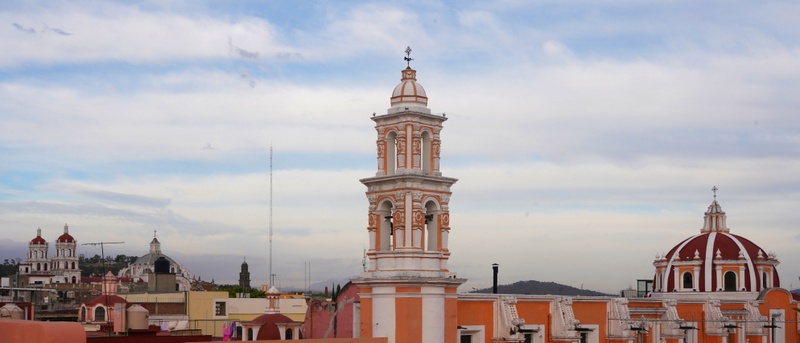
The fourth largest city in Mexico, Puebla serves as one of the main hubs for eastern Central Mexico. It is home to five major indigenous groups: Nahuas, the Totonacs, the Mixtecs, the Popolocas and the Otomi.
Puebla is one of the five most important colonial sites in Mexico. The old city centre is filled with churches, monasteries and mansions mostly done in grey cantera stone, red brick and decorated with multi-coloured tiles. With some 5,000 old buildings with various styles and techniques such as Baroque, Renaissance and Classic, Puebla is considered to be the “cradle of Mexican Baroque” both in architecture and in the decorative arts. Owing to the historical and cultural value of Puebla’s architecture, the historical centre of Puebla has been ascribed on the World Heritage List.
Culturally, the state of Puebla is home to mole poblano (a traditional marinade and sauce originally used in Mexican cuisine) with active literary and art scenes
As I could not check in till 3 pm, I spent a few hours wandering aimlessly, looking at the buildings and soaking in the atmosphere. I had authentic mole for lunch in a local eatery two blocks from the hotel. My lunch with a beer only cost me 110 MXN.
I always find old quarters with cobble-stone streets lovely and charming. After lunch, I crossed the road and found myself at El Parian, an arts and crafts market. There are dozens of studios and galleries.
I passed the beautiful Theater of Puebla which was inaugurated in 1761. The present building was rebuilt in 1940 after the original one was burnt down in 1902. I love to go inside and watch a show. Unfortunately, there was no show today.
I saw the impressive old Church of San Francisco complex in a distance. As I was a bit tired, I did not make an effort to cross the road to check it out. I thought I would return the next day. But I had no time to do so.
I continued my exploration on foot. Soon I arrived at a large covered market La Victoria which is neat, tidy and vibrant.
Next door is the Church of Santo Domingo with a main portal in pure classic style finished with grey cantera stone. It consists of three levels with paired Doric-like columns. The façade of the old monastery is highly decorated in Baroque style, in front of which is a large atrium. Inside the ceiling consists of two large vaults and contains gilded altarpieces in Baroque, Salmonic and Churrigueresque styles.

The gem of the church is the Chapel of Our Lady of the Rosary built between 1650 and 1690. The gilded glittering chapel is filled with images and elements which are representatives of the Baroque of New Spain. The cupola is in the shape of the crown of the Virgin Mary. As a service was taken place, I had to stand outside to gaze at the breath-taking interior decoration.
I followed the Calle 5 de Mayo to the Zocalo (the main plaza) where the Cathedral and the Municipal Palace stand.
Construction of the imposing Puebla Cathedral began in 1575 and took 300 years to complete. It was consecrated in 1649.
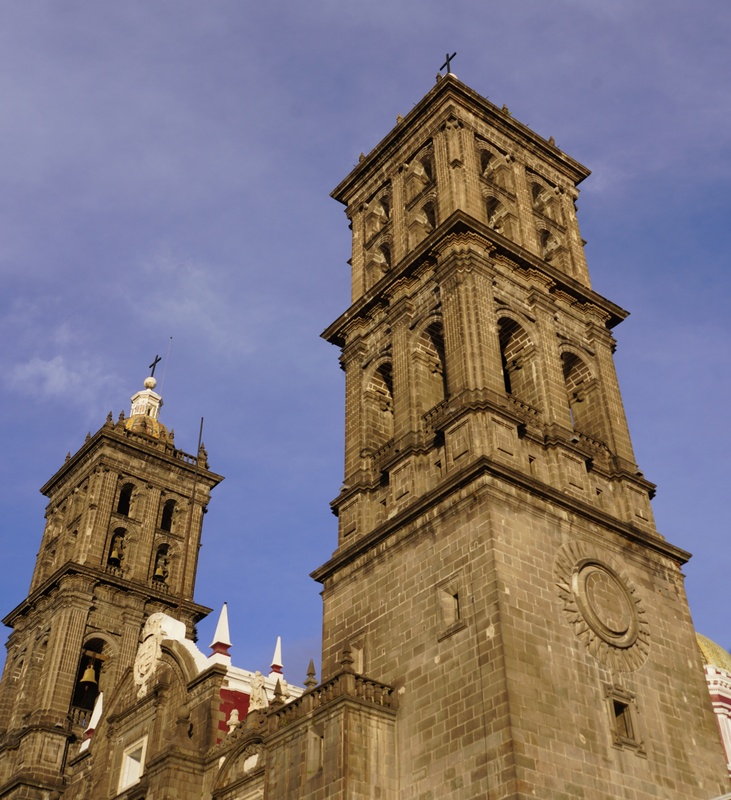
The shape of the cathedral is a Latin cross containing five naves. The façade is classified as late Baroque in transition to Neoclassical with Doric and Corinthian columns. The bell towers standing at just under 70m high, are the tallest in Mexico. The complex contains 14 chapels. The seats in the choir is made of parquetry of fine woods, onyx and ivory of Moorish design. The two enormous organs were donated by Charles V.
I continued on foot to the Palafoxiana Library on the next street (5 Oriente). Established in 1646 by Juan de Palafox y Mendoza with his donation of 5,000 books for the Seminary of Puebla, it is the first library in the Americas. The main room was constructed in 1773 in Baroque style.
Today, the library contains over 42,000 books, 5,000 manuscripts and other items dating from 1473 to 1910. UNESCO has made this library part of Memory of the World.
There are too many things to see and do. I was glad I made the best decision of the day: I went to El Mural de los Poblano on 16 de Septiembre for dinner. It is billed as one of the best restaurants in town with impressive murals on the walls of an old house. I had an excellent dinner with lamb and a margarita for 350 MXN.
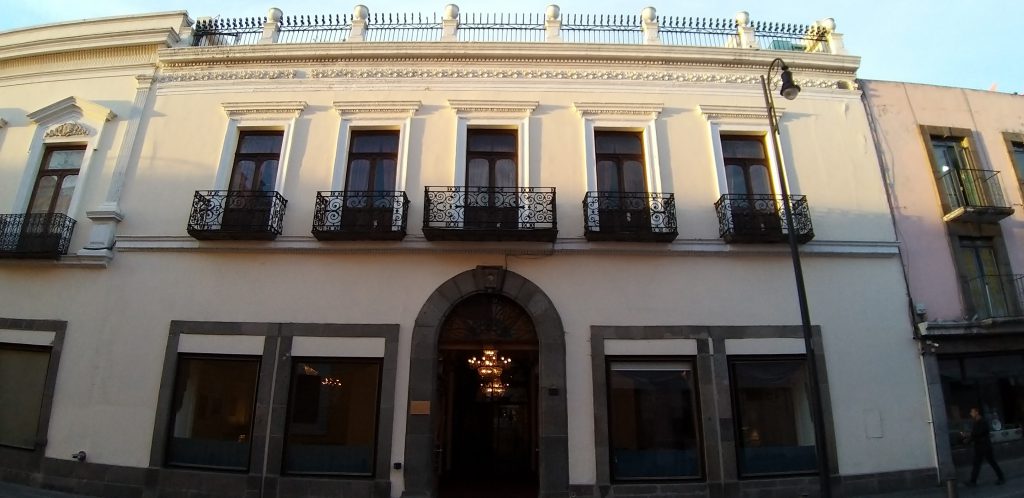
I returned to my hotel which is housed in a grand old mansion with a beautiful entrance and façade. Unfortunately, I had a bad experience. First, my room located on the second floor has no view. Second, I could not open the window due to ongoing renovation work outside. The window was dusty and dirty. Third, I was bitten on my neck and both arms and hands by bugs/insects on the first night. Though the staff were helpful and changed all bedsheets, I still had a few bites the second night. What a nightmare!
February 1 Saturday: Cholula
I woke up before 3 am after sleeping for six hours. I got up and spent a couple of hours learning Spanish online (www.duolingo.com).
Today, I would make a side trip to see the Great Pyramid of Cholula which is about 11 km from Puebla. There is a free train to Cholula. I left the hotel around 7 am and had a leisure walk through sleepy and apparently poor areas of the city. I missed the train by five minutes and had to wait for the next one at 8:30 am.
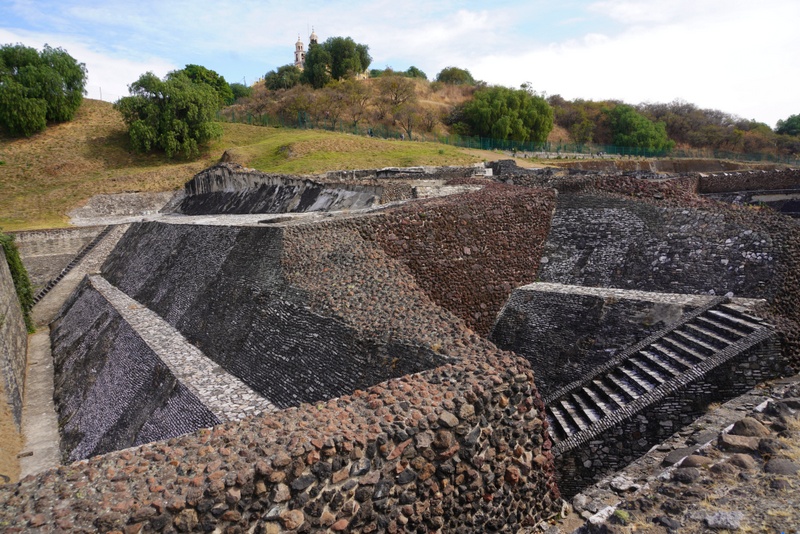
The train is modern and comfortable. There were only half a dozen passengers on the train. During the 30-minute ride, I quickly looked up Wikipedia and realised I was about to see the largest archaeological site of a pyramid (temple) in the New World and the largest pyramid known to exist in the world today.
The pyramid was an important religious and mythical centre in pre-Hispanic times. It was built over a period of a thousand years prior to the Spanish Conquest in four stages, starting from the third century BC through the ninth century AD. It is a temple that traditionally has been viewed as having been dedicated to the god Quetzalcoatl.
The Great Pyramid has a base of 450 by 450 metres and a height of 66 metres. It is the largest monument ever constructed anywhere in the world with a total volume estimated at over 4.45 million cubic metres. The architectural style of the building was linked closely to those of Teotihuacan in the Valley of Mexico but with evident influence from the Gulf Coast especially from El Tajin. Today, it stands 55 metres above the surrounding plain.
At its peak, Cholula had the second largest population in Mexico of an estimated 100,000 people living at this site. Though the city suffered a drastic population drop in the 8th century, the Great Pyramid retained its religious importance.
I spent almost three hours on this site. I paid an entrance fee of 80 MXN which included a museum visit, a tunnel-walk and a visit to the expansive archaeological site.
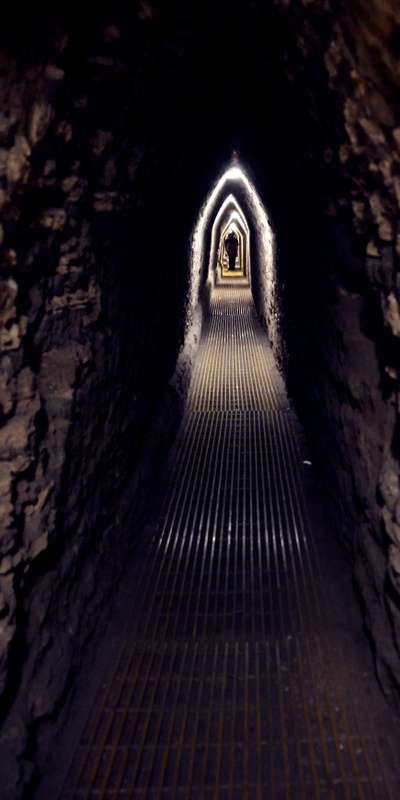
There is not much to see in the museum. The model of the site is nonetheless useful. But the most interesting part in the museum is the recreation of the Mural of Drinkers discovered accidentally in 1969 when the taluds of a building near the Courtyard of Altars collapsed and exposed a portion of the mural.
The walk through the narrow tunnel is interesting and atmospheric. Apparently eight kilometres of tunnels have been dug into the pyramid. Today, only 800 metres are open to the public. One can see the steps and appreciate how it was built.
When I came out of the tunnel, I was not sure where I should go next. There is no directional sign. Anyway, I followed the main path and soon arrived at the entrance to the archaeological site.
Before visiting the site, I decided to stretch my legs by walking to the top to visit the Sanctuary of Our Lady of Remedies, a pilgrimage site.This church built by the Spanish on top of the pyramid, offers fantastic views of the whole region including the two volcanoes. I could see grey smokes coming from Popocatépetl.
I spent an hour in the expansive site which has brief explanations in English on Buildings A-D, I and the Court of Altars.

Before leaving, I climbed Building F, a reconstructed stone stairway which was first built between 500 and 700 AD. The tableros are decorated with a motif that looks like a woven palm mat. For this reason, the structure is also referred to as the Piedra Laborada (worked stone) building.
It was close to midday when I came out. Though I was tired, I continued with my walk as I found this colourful small town vibrant. The zocalo is leafy with a lively but laid-back atmosphere.

It is said that Cholula has 365 churches. I only visited a few near the Zocalo.
- The former Franciscan Convent of Saint Gabriel has a very large atrium. It is one of the oldest temples in Mexico built in the 16th century that sits on land sacred to the Aztec followers of Quetzalcoatl.
- The Chapel of the Third Order has an impressive Baroque entryway and altarpiece.
- The Parish Church of San Pedro built in the 17th century is inviting.
Time for lunch! I noticed the restaurants all offerred buffet for 100-150 MXN. I soon found my way to La Casa Frida on the main street and paid 129 MXN for a wholesome and authentic Mexican brunch!
I strolled along the main street and soon found my way to the lively covered market. I was amused to find a dozen meat stalls akk preparing and selling deep-fried pig skin. A store keeper gave me a piece to taste. Delicious!
Before taking the 4 pm train back to Puebla, I paid 40 MXN to visit the Cholula City Museum (the House of the Eagle Knight). I like the setting and how exhibits are neatly placed in several white-washed buildings. There are many beautiful pottery and stone sculptures. But most exhibits have no English interpretation.

Once back in Puebla, I jumped into a taxi instead of spending another 30 minutes on foot to the old city. I got off at the famous Amparo Museum on 4 Sur. Housed in two colonial – era buildings from the 17th and 18th centuries, the museum has 14 exhibition halls with pottery, steles and sculptures from the Zapotec, Huasteca, Maya, Olmec and Aztec cultures some dating from 2500 BC. I also saw a couple of contemporary art installations.
But what I like most is the way the old buildings have been renovated and retro-fitted. The best part is the roof-top garden where one can admire the incredible vista and skyline of Puebla.
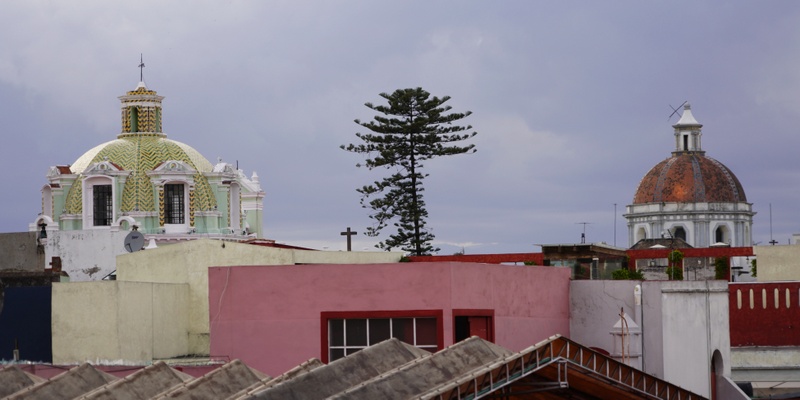
There are too many museums and notable buildings to see. As it was getting dark soon, I decided to go to Los Sapos, a weekend antiques market before it closed around 6 pm. It’s fun.
During the two-day stay in Puebla, I visited many churches including the Church of Our Lady Carmen, Church of St John Lateran “The Little Hospital”, Parrish of Our Lady of Solitude, Church of St Anne and St Joachin, Church of Immaculate Conception, and Church of St Peter (opposite my hotel). They are all different with their own history.
As I had a big lunch, I only had a snack at Ranas (three small tacos for 38 MXN). I went to bed early as I had to take the 8:25 am bus to Oaxaca.

